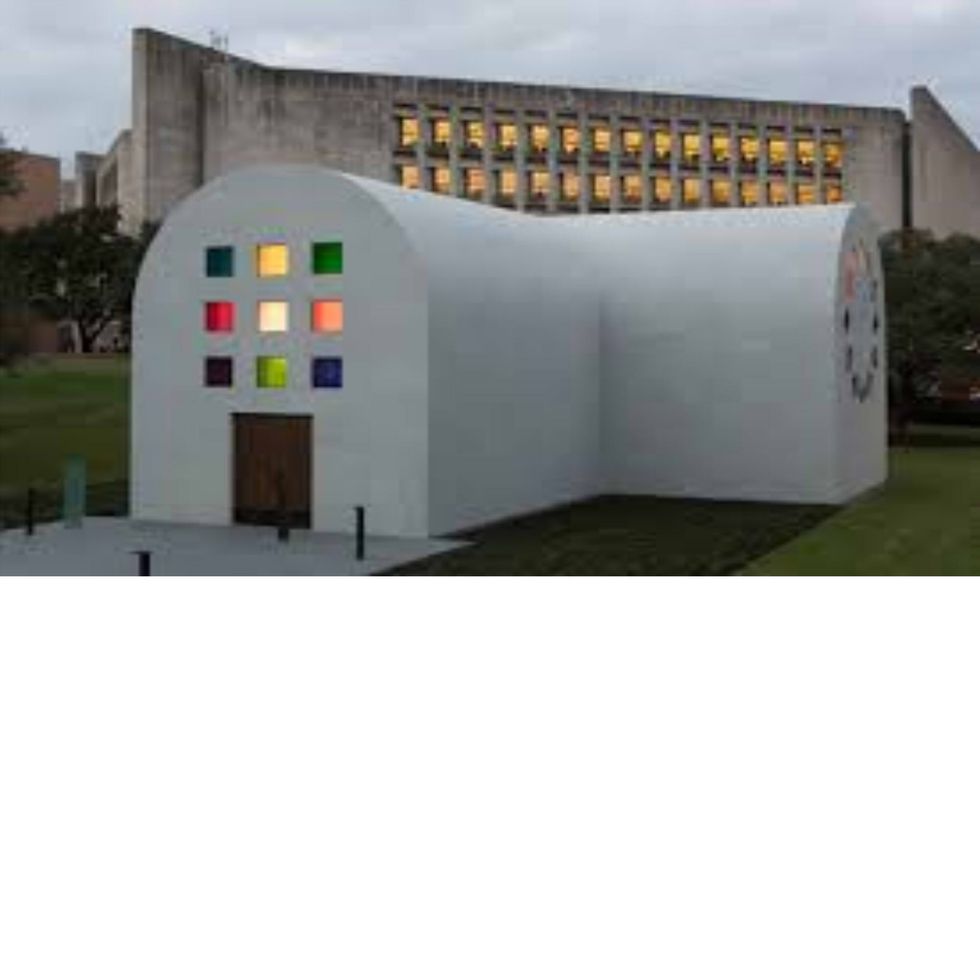I recently had the opportunity to go visit the Blanton Museum of Art right here on campus just a few days shy of the start of spring break. It was apparently prime museum visiting time as swarms of children from neighboring elementary schools and sophisticated art critics alike shoved their way into the Blanton.
The Ellsworth Kelly exhibit had just opened to the public a few weeks beforehand, and it seemed as though the whole locale was buzzing with newly found energy that only new artworks can constitute. Everyone (those round-faced children and stuffy critics) appeared to be dead-set on checking out the stone behemoth a few hundred feet away from the entrance to the museum.
Completed after Kelly’s passing in 2015, Austin serves as the artist’s culmination of his greatest and most deeply explored motifs throughout the entirety of his career: Spectrum, Black and White, Color Grid and Totem. Now, I’m a far cry from an art major, but bear with me while I lay down some (albeit hurriedly researched) knowledge.
Ellsworth Kelly was born in Newburgh, New York in 1923, and served in WWI before later enrolling in art school and moving to Paris. He carefully cultivated his interest in art and how it portrays the depth of human emotion and spirituality — a notion that is heavily present within Austin’s chapel-like facade. His last piece, as mentioned previously, contains all of Kelly’s iconic central themes. As you approach Austin from the outside (it is an outdoor exhibit, after all), the south-facade window shines brightly with the lit-up color grid embedded above the doorway.
Upon entering the building, it feels as if you are walking inside a soundproof bubble where peace and quiet remain essential elements. The inside is minimalistic and calming, all cool tones and black and white paintings along the entryway. These paintings represent Kelly’s Black and White motif and symbolize balance and imbalance, purity and evil. I managed to snag a few moments with a tour guide who talked briefly about the geometric monochrome paintings as being symbolic for Catholic iconography such as the Stations of the Cross.
I was simultaneously incredibly impressed but felt guilty about not majoring in art history as I knew that I wasn’t viewing these pieces with the full breadth of knowledge they deserved. I mean, I thought the white and black paintings were remarkable but it didn’t even faintly cross my mind to consider religion in conjunction with them. After observing the paintings, an 18-foot tall wooden totem quickly comes into view.
This piece exhibits the male figure with a broad apex tapering to a thinner bottom. Looking to the left and to the right showcase more stained glass windows. These represent the Spectrum motif and display Kelly’s familiarity with color theory and perception. I recommend going when the sun isn’t being obscured by clouds for the full effect of the colored windows that leave beautiful shadows that contrast with the minimalist architecture inside the building.
Austin is intended to be an area of introspection and contemplation, a place to safely calm one’s mind and organize thoughts. I was lucky enough to go right before my midterms just by happenstance, and I did my best to let go of any lingering anxieties about testing within Austin’s stone walls. Admission is free for UT students so long as you show your student ID at the Blanton’s check in, and I believe it’s nine dollars for adults who are not students or UT faculty. Make sure to check out the Form into Spirit exhibit (open until April 29th) before going into Austin as it will give you some background insight into who Ellsworth Kelly was and what he spent his entire career accomplishing, but above all, just enjoy some well-spent time at your local museum.















